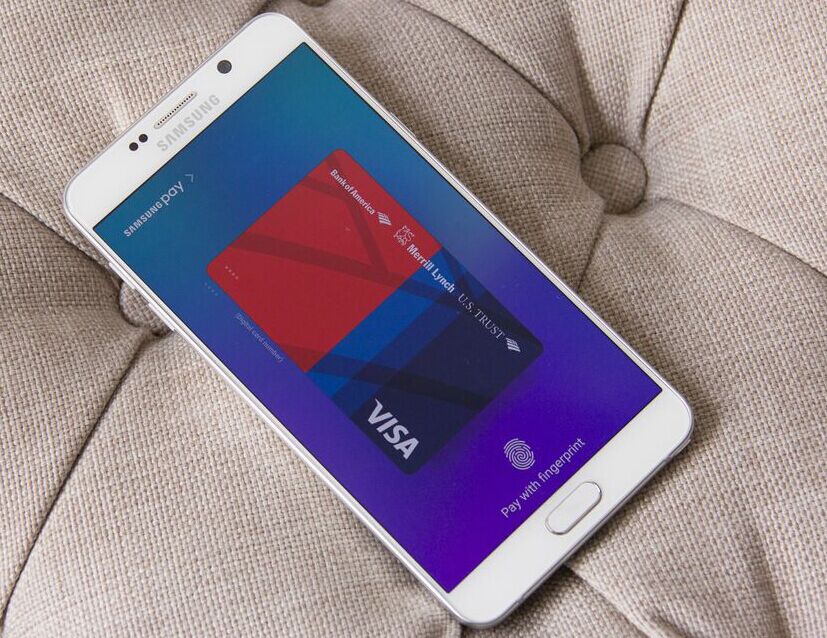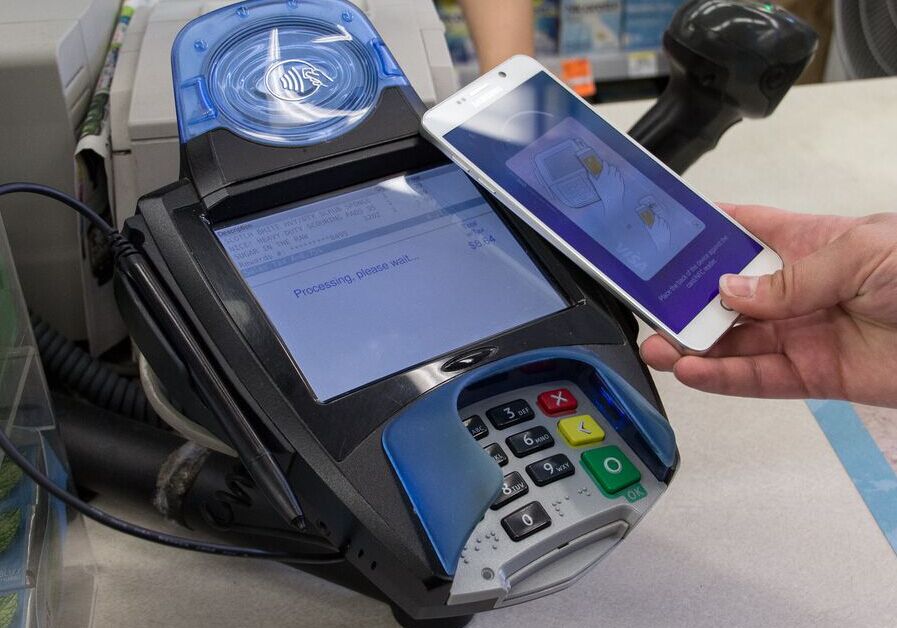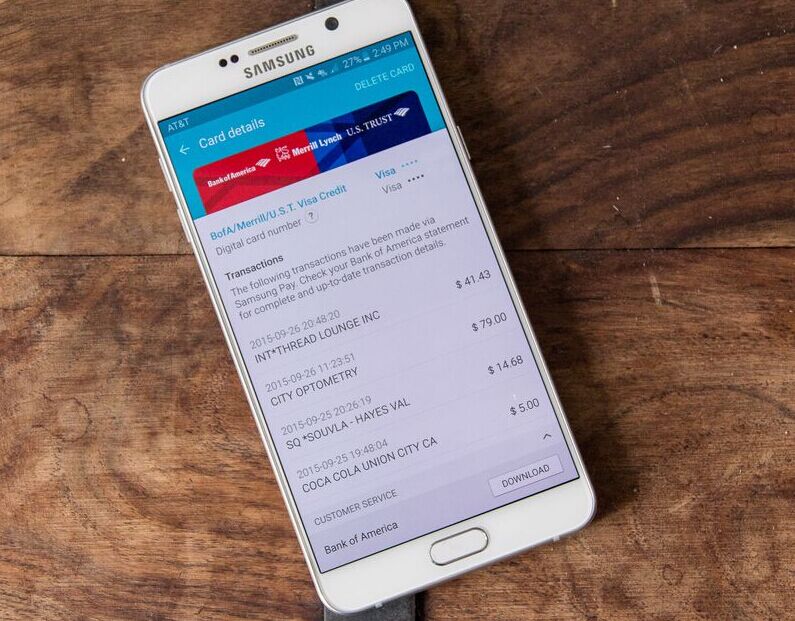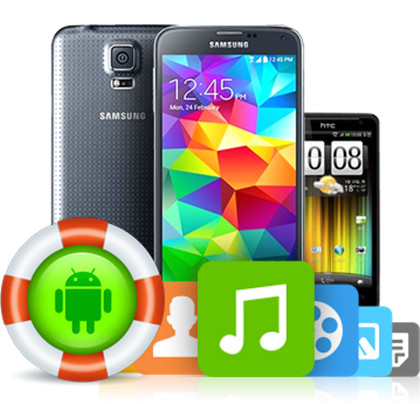By Selena KomezUpdated on November 21, 2016
Samsung Pay is now available in the US. Here’s how it works and what you need to use the mobile payment system.Samsung’s mobile payment system Samsung Pay is now available in the United States after an earlier deployment in the electronic giant’s home country of South Korea.
It works in almost all stores — including those that use older magnetic stripe point-of-sale terminals — without merchants needing to opt-in to any program or update hardware.
Where is Samsung Pay available?
It’s currently available in South Korea and the US. Samsung Pay will be available in China in March, with the service launching in Australia, Brazil, Canada, Singapore, Spain and the UK later in 2016.

What phone/bank/card/carrier do I need?
Samsung Pay works with higher-end Samsung phones: the Galaxy S7, S7 Edge, S6 Edge+, S6, S6 Edge, S6 Active and Galaxy Note 5. It is also available on the Gear S2 smartwatch, but only for transactions on NFC terminals.
The phone also needs to be on one of the following carriers in the United States: AT&T, Sprint, T-Mobile, US Cellular or Verizon.You will need a Visa, MasterCard or American Express issued by Bank of America, Chase, Citibank, PNC, Synchrony Financial, US Bank or Wells Fargo.
For Australia, there’s no information about which carriers Samsung Pay will be partnered with and so far the only financial institution partnership that has been announced is American Express.
Where can I use Samsung Pay?
Samsung claims that its system will work with almost all point of sale systems: NFC, magnetic stripe and EMV (Europay, MasterCard and Visa) terminals for chip-based cards.
However, it won’t work with readers where you need to physically insert your card into a slot such as those found at gas stations and on an ATM.
In two weeks of using Samsung Pay in stores around San Francisco, I found that it was accepted almost everywhere. These included vendors using Square readers; NFC terminals in major chain retailers like Trader Joe’s and Walgreens; and magnetic stripe readers in smaller stores. Merchants may still require you to sign a receipt for the transaction.
One point-of-sale system that did not work with Samsung Pay was an iPad-based payment terminal called Shopkeep. It recognized that I was trying to make a payment but it said that Samsung Pay wasn’t a valid credit card. A Samsung spokesperson said that “We are constantly updating Samsung Pay to work with the vast majority of card readers — unlike every other mobile payment option which only work with a limited number.”
What does the setup process involve?
Once the Samsung Pay app is installed, register your fingerprint on the device if you haven’t done so already. The camera will launch so you can scan your credit or debit card. Check that the number, name and expiration date are all correct. Finally, the app will need to verify the card by sending you an SMS or email from your bank.A total of 10 cards can be added to Samsung Pay.
How does it work?
Samsung Pay uses near-field communication (NFC) technology to process payments at tap-to-pay terminals.
However, the system also works with almost all other magnetic stripe terminals as well. These older systems are widely deployed throughout retailers in the US. Samsung Pay uses magnetic secure transmission (MST) when the phone is held against one of these registers. The phone emits a magnetic signal that simulates the magnetic strip found on the back of a credit or debit card.
Earlier in 2015 Samsung acquired mobile payment company LoopPay which developed the specific MST technology used for Samsung Pay.

How do I make a payment with Samsung Pay?
From the lock screen, swipe up from the small Samsung Pay bar just above the home button. Then place your finger on the home button to verify your fingerprint and hold the back of the phone against the payment terminal.
Once the payment is made you will get an Android notification that confirms the merchant name and the amount of your purchase. This information is also documented in the Samsung Pay app.

How does it differ from Apple Pay or Android Pay?
The main difference is that Samsung Pay works at almost all stores that accept credit or debit cards, not just those with tap-to-pay NFC terminals.
Is it secure?
Samsung Pay does not store the account or credit card numbers of cards on the device, instead using tokenization for transactions. Each time a purchase is made, the Samsung Pay handset sends two pieces of data to the payment terminal. The first is a 16-digit token that represents the credit or debit card number, while the second piece is a one-time code or cryptogram that’s generated by the phone’s encryption key.
What if I lose my phone?
Payments can’t be made from your phone without being authorized via fingerprint or the PIN chosen during the setup process. If you register with Samsung’s Find My Mobile service you can remotely erase information on the phone, including any cards stored in Samsung Pay.
Can I use Samsung Pay even without a Wi-Fi/cellular connection?
Yes, although you will only be able to make 10 payments without the device being on Wi-Fi or cellular data. You will also need to have an active internet connection to add a card and to access transaction history.
Does Samsung Pay also work for returns?
Yes. Merchants may require you to hold the phone against the payment terminal in the same way as when you make a payment to process the return. Also, you will be asked to match the payment information on the receipt with the last four digits of your virtual card number. This is accessed through the Samsung Pay app.
Read more:
Apple Pay:Everything We Should Know
How to Fix Top 5 Samsung Problems
How to Get More Internal Storage from Samsung
Top 5 Music Player for Samsung Phone
Tips to Make Full Use of Samsung Galaxy S7(Edge) Camera
Prompt: you need to log in before you can comment.
No account yet. Please click here to register.
